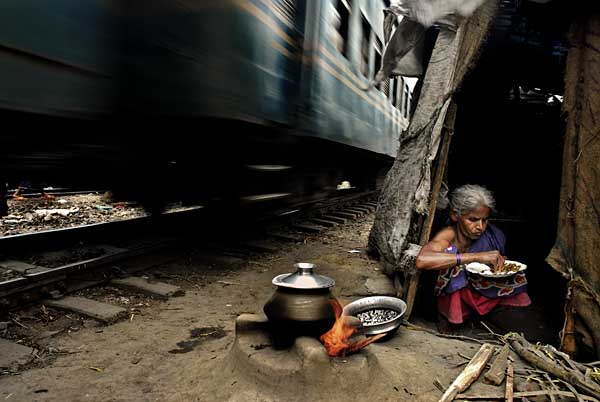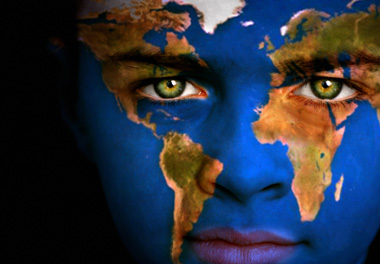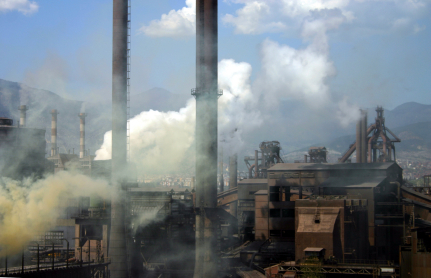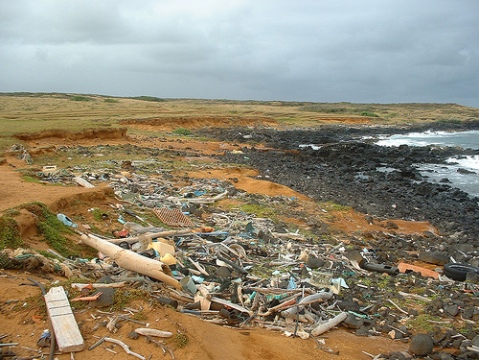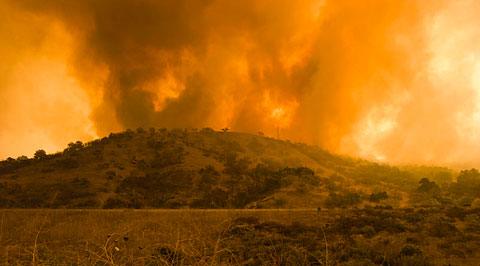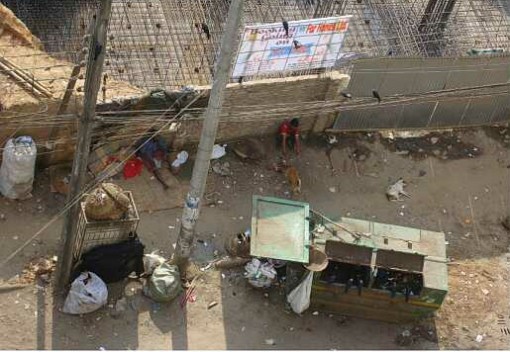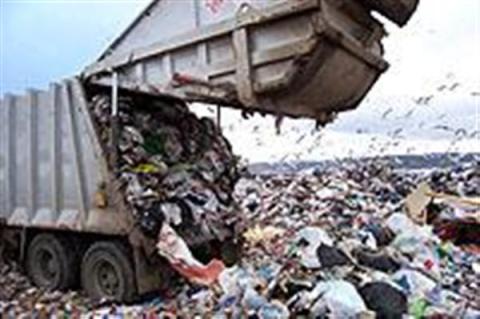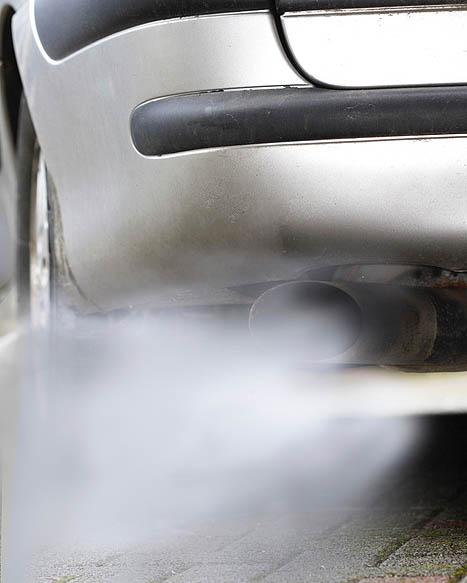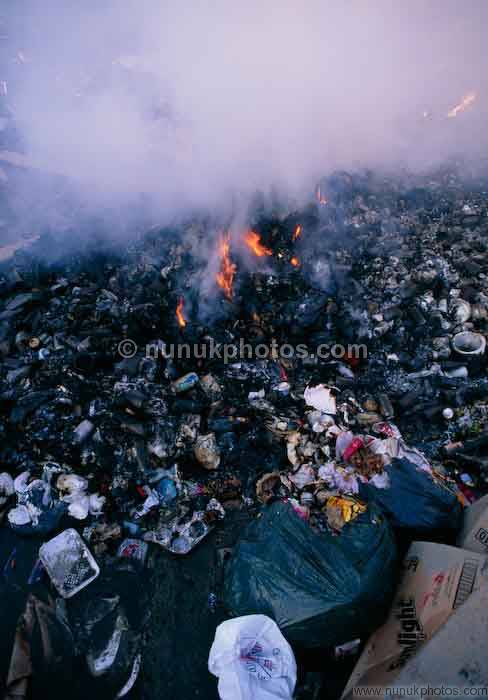Prime Minister Sheikh Hasina committed to building Dhaka as modern city
Implementation of Dhaka city Master Plan
TODAY Dhaka is growing without guidance of any master plan. The Master Plan and its contents today remain constrained within theoretical definitions of structure plans, master plans and area development plans. The need of the day is to find a process by which the city can derive benefits from execution of the current plan. Planning contents of the two last master plans for Dhaka are discussed and gaps in implementation of both plan documents are highlighted below:
The first formal plan for Dhaka was made in 1917 by Professor Patrick Geddes, the much respected British town planner, in the concept of a Garden City and evident from the romantic street pattern and garden of the Ramna area. It reports on town planning for Dhaka after detailed analysis of problems and predicts Dhaka's possibilities to become a beautiful city with parks and canals. Dhaka city was divided into zones as shown in Fig. 1 in this plan, which offered an outline for development of the old town area with colonial offices and residential buildings around Ramna Green.
The East Pakistan Government created the Dhaka Improvement Trust (DIT) in 1956. The Master Plan for Dhaka 1960 was commissioned by the Secretary of State for Commonwealth Relations in August 1957 and DIT was recipient of the plan. The area of the plan was approximately 220 sq.miles and included the port town of Narayanganj. The plan area with its existing and proposed boundaries is shown in Fig. 2.
Problems identified and major assumptions of 1960 Master Plan
Both Dhaka and Narayanganj suffer from shortages of suitably located high land, free from annual flooding. The 1960 Master Plan envisaged that large areas would be needed for expansion purposes, principally for residential development, to accommodate natural increase. It provided for population to be displaced from the old city by slum clearance to relieve existing overcrowding. The plan predicted that expansion was possible only the North.
 |
Figure 1: Dhaka City Map of 1917 |
It saw the future Dhaka in an elongated form with the old town as its broad base and its apex as two northward thrusting prongs, one following the railway to Tongi, and the other to the West in the direction of Mirpur.
 |
Photo:star |
Reclamation of selected areas of low lying land nearer to Dhaka with which to augment the limited supply of building land is mentioned in the report. Congestion in the old central area was identified as a major problem. This was proposed to be improved by developing a framework of major roads by undertaking extensive schemes of slum clearance, and by creating open spaces.
Proposal for additional housing areas and removal of Dhaka University were also made. Mirpur at that time was seven miles away from the main city area and seen as a residential satellite town for the working population of Dhaka.
Expansion of the Trust's northern boundary to include all land at Tongi suitable for building was proposed along with northward extension of the city boundary from Demra along both sides of the Lakhya River. Both these extension proposals were implemented at a later stage though Tongi was developed mainly as an industrial zone. Land on the south bank of the Buriganga River was to be controlled by the Trust and if on investigation found practicable, the Trust was supposed to reclaim an extensive area for development. Eight major road proposals were made and all of them were implemented over the next 30 years. Today these roads form the arteries of the city.
Concerning local planning, the plan stated that control over the use of land and buildings, whether for development by government departments or private individuals, should vest in a single planning authority, in this case the DIT which continued to execute the plan of 1960 without any revision till the nineties.
Execution of the 1960 Master Plan
The content of the 1960 Master Plan report was comprehensive and sensible. DIT followed the plan quite diligently and developed the transport network, residential, commercial and industrial areas according to the guidelines. However, plan and the population projections could not cover growth after 1971.
For example, the plan recommended residential densities of 200 persons per acre and net density of 334 persons per acre. At the predicted growth rate the plan assumed the need for 50,000 housing units for an increase of 0.4 million in population in 20 years time. In reality the increase in Dhaka's population 20 years later was more than 3.0 million and the housing need of this time is close to 3 million.
 |
Figure 2: Dhaka City Map showing Existing and Proposed DIT Boundary, 1960 |
The report also gave a lot of importance to displaced people and slum rehabilitation as a consequence of urban renewal. Accordingly, residential areas were demarcated and planned residential areas of Dhaka city today, including Mirpur and Dhanmondi are examples. For Dhaka and Narayanganj relevant landuse transport routes and bridges were proposed and executed. Proposals for other forms of landuse such as clearance of slums and dilapidated areas did not receive much attention and densification of such areas continued both in Dhaka and Narayanganj. Tongi, developed as an industrial area, although large tracts of unused land became settlements of migrant labours after liberation.
The plan did not propose removal of areas such as the Cantonment, Peelkhana and Old Airport that are not in public use; instead, it proposed shifting of the Dhaka University campus without considering the historical significance of the site. The study in this sense lacked sensitivity and pro-people development strategies.
DIT as the executive authority was entrusted with both planning functions and their execution. It continued to plan and develop, mostly following the Master Plan, without taking into account socio-political changes that occurred after 1971. The guidelines of the plan suggested continuous review but this was not taken up seriously. Some half-hearted attempts for planning was taken in new areas like Shewrapara, Kamrangir Char, Joar Sahara, but these ended up only as planning exercises. Rather, the authority remained busy in managing its own land resources and raising funds for its internal fiscal management.
Dhaka's rapid and intense growth necessitated a fresh plan and the UNCHS undertook a series of studies for the urban areas of Bangladesh. A joint effort with ADB in 1980 produced an extensive study on Dhaka by the renowned consulting company Shank Land & Cox but the Planning Commission did not approve the report.
Finally, in 1991 the newly elected government took up the proposal for a Master Plan. This time two other British companies, namely Mott MacDonald Ltd. & Culpin Planning, were lead consultants. Ultimately, almost 30 years later a new Master Plan was undertaken and completed in 1997.
Dhaka Metropolitan Development Plan (1995-2015)
By 1991 Dhaka City had expanded to an area of 590 sq. miles (1528 sq. km.) with a population of 6 million. DIT was renamed RAJUK by this time and was dealing with the Metropolis without changes in its organisational structure. The Dhaka Metropolitan Development Plan (DMDP) was funded and executed by UNDP and the government of Bangladesh. The objectives were:
§ Preparation of integrated development plans and priority sectoral plans.
§ Installation of sustainable capabilities in RAJUK to prepare and implement such plans.
§ Improving the capacities of RAJUK and related national training, research and advisory institutions.
The plan had four components; planning, drainage and flood control, computerised data and mapping. It took 3 years from 1992-1995 to formulate the study and another two years to finalise reports and plans. The Master Plan reports are presented as a three-tiered plan process containing the Structure Plan, the Urban Area Plan, and Detailed Area Plans. The Structure Plan and the Urban Area Plan were published in two gazetted volumes.
The Structure Plan provides a long-term strategy up to the year 2015 for development of the Dhaka Metropolitan Region. It recommends spatial and sectoral policies for the DMDP area.
 |
Figure 3: Group Boundary of Detail Area Plan |
The Urban Area Plan provides a mid term strategy up to the year 2005 for development of existing urban areas. It delineates existing land uses and specific location of roads and other infrastructure facilities and provides indicative locations of future land uses and specifications to assist the government for guiding and managing development control.
The Detailed Area Plan is intended to be a part of the ongoing process as well as to provide more detailed planning proposals for local level planning is yet to be completed. The DMDP Plan area with the planning zones for DAP is shown in Fig. 3.
Execution of the 1997 Master Plan
13 years have elapsed since completion of this plan. The Structure and Urban Area Plan has been presented very methodically and directives for their implementation are very clear. But measures adopted for applications have been too slow;
a) By 2005 RAJUK should have completed all the detailed area plans and started their implementation at the local level but till now people are not sill aware of the DAP and its contents.
b) One of the major components of the Master Plan "Institutional Strengthening of RAJUK," has not been considered by the concerned ministry or by RAJUK. It is felt by many that RAJUK needs a big number of planners whereas it has only about 10 to deal with the task of planning for a mega city of approximately ten million inhabitants.
c) Today vast areas of the city have no detailed plans and people of these areas do not get permission to build. Informal development and unauthorised construction occur due to lack of plans. RAJUK has not been able to generate local interest or activity for community participation in planning so that building and landuse control could be a concern of the people and actually aid them in planning and building control.
Strategies for better utilisation of the Master Plan.
It is quite obvious that delays in implementation of the Master Plan will make it redundant. Series of actions needs to be taken up immediately to implement the plan objectives and to gain its benefits. Some measures that need to be taken up are mentioned below,
RAJUK must increase its manpower. It must have adequate number of professional and technical manpower worthy of executing planning functions for this mega city.
RAJUK must implement the detailed area plans as quickly as possible.
RAJUK must place total emphasis on its planning activities and quit land development functions. Decentralisation of RAJUK planning body into at least 10
Zonal Offices is necessary. This could be merged with DCC's zonal offices so that city planning and service management functions can work together in coordination for the benefit of the city.
RAJUK has limited power for adopting legal measures dealing with building control, which hinders its functions. Special laws have to be enacted to empower RAJUK for planning and building control functions.
RAJUK must make its plan, programmes and activities more pro-poor. What RAJUK plans and does is only of relevance to the top twenty percentile. RAJUK controls planning for 10 million people but it has never revealed how many of the inhabitants it is actually serving. As much as 70 percent dwellers of this mega city are dwellers of slum and squatter settlements but RAJUK's planning actions have totally disregarded them.
slums in the Dhaka City
In 2010, the population of the city of Dhaka has been projected at 17.6 million people, with upto 60% in the slums. Everyday we observe the influx of hundreds of new people to the city of Dhaka. But why do people come to Dhaka and other cities in Bangladesh? There are two factors behind it: a) pull factor and b) push factor. Bangladesh is urbanizing fast. People are moving to places where there are or perceived to have jobs and opprotunities. The cities are the new centers of jobs and opportunities. The bigger the center, the stronger is the pool. Dhaka is the primate city in Bangladesh according for over 30% of the total GDP. It is pulling rural migrants faster and larger than any other cities in Bangladesh. Findings showed that, 56% people migrated to Dhaka city for economic reasons. There are also some push factors working in the process of migration to the cities, specially to Dhaka city. Now-a-days maximum slumdwellers are one kind of environmental migrants. The often natural disasters: flood, drought, cyclones, riverbank erosion destroys the agricultural outcomes every year. While Bangladesh is an agro-based country these disasters are much painful for the farmers and they are obliged to go to the cities. The job sector of rural areas are not much strong so people are pushed to the cities. And for many other people demonstration effect is big enough to push them to the cities.
Until the early nineteen nineties, majority of the slums were located on public lands. The percentages of slums on private lands were less. Things began to change in the nineties. The government started to evict many slums from public properties. Open private lands were still available. Private land owners started to rent out the lands to slumdwellers as the return on these lands were handsome because of high densities. Thus in 2006, 77% of slums were on private lands.
The Bangladesh Demographic and Health Survey(BDHS) is a periodic study of the population and urban areas are surveyed including the slum areas. Some findings of the survey can be mentioned here. Slum land was owned by a land owner or Bosti(slum) owner for 83%, and rent collected for permission to build a bamboo shelter to use as a home. Land owners and Bosti owners are not thought to pay government taxes and are not accountable for the conditions or safety of the slums. All families lived in one-room dwellings, with construction usually of bamboo frame, fencing and roof. An average of five people lived in each room, and some families had over eight individuals in one room. Female, adults and children tended to work as housekeepers, labourers or in the garment piecework, while male adults and children tended to work as rickshaw pullers, laborers, brick breakers, drivers or carpentars. The average income per family was 3725 Taka per month and the average expenditure was 3218 Taka per month. However many families reported that expenses greater than income and dependence on loans for survival. Expenditures included rent, food, education, cloths, electricity, water, wood and health care.
The situation of these slums is not very satisfactory. Most respondents(89%) did not feel that they lived in a hyzenic environment, and 93% felt that the slum had lead to disease or ill health in their families. The most desirable place to live was felt to be in their village of origin(57%), while others dreamed of living in higher-class places in the city(14%), a place more quiet(14%) or free of mosquitoes(5%). Only 6% were happy in their current location. Evils described were unclean latrine facilities(30%), harassment by slum owners and need to pay bribes(10%), lack of employment(32%), mosquitoes(86%), extremes of heat(5%), lacking roof(11%), harassment of women(7%), lack of available fuel/gas(17%) and lack of food(3%). Barriers preventing to a move to a more desirable location were stated as a lack of funds(91%), lack of land(11%), inability to find work(10%), lack of government assistance(14%), illiteracy(2%) and large family size(1%).
A fifth of slum households are missing missing at least 3 of their basic needs. According to an UNESCO report, education figures for slums in Bangladesh’s capital Dhaka are among the worst in the South-Asian county. The report entitled, “Education for All Global Momitoring Report 2010, Reaching And Marginalized”, which was launched in January from the UN Headquarters in New York, revealed schools run by non-governmental organizations play and important function in slums in Dhaka. Childhood immunization in Dhaka slum households has been reported at (51-76)%. In the survey 89% reported childhood immunization, though records for each child were not polled. The rate of substance use and gambling is very alarming.
There are also some positive factors. A 2005 study on migration and poverty in Asia by the International Organization for Migration notes that ‘’even if migrant jobs are in the risky informal sector, the gains to be made can be several times higher than wages in rain-fed agriculture.’’ Many slum dwellers are infact enterpreneurs, albeit writ very small. At the individual level, the woman were benifitted in terms of mobility and skill, self confidence, widening of interests, access to financial services, build own savings, competence in public affairs and status at home and in the community that lead a better awareness for enhancing women’s empowerment. However there is a need for proper training for sustainable development in the long run.
Although there are some positive aspects, the negative aspects overshadows these positive factors. So some reforms can be done for the betterment of the lives of the slum dwellers.
- Thoughtful open space planning and environmental management and sustainable development of the city area.
- Urban land management of the city will be much more feasible for all.
- Rehabilitation of slumdwellers in new settlements in which the allocated slumdwellers will have legal tenure of land and thereby benefit from future development programs.
- The current land occupied by the slums will be cleared and returned to the private and public owners in phases.
- NGOs and other donors and assisting agencies can provide financial and other help knowing that the residents have security of tenure.
- Provisions for various slums either by the public sectors or NGOs would be eminently feasible.
- The government should ensure healthcare and reproductive training and facilities.
- Educational and Vocational training should be served.
Community building will become feasible while currently there is no community in the slums. People live in fear of eviction, of criminals, rent seekers and other miscarants. It will be possible for them to live in the knowledge of security and protection of the law of the land.
Bangladesh has one of the highest rates of the urban population growth rate of about 1.67%(4th decennial population census 2001, Statistical Yearbook of Bangladesh, 2004). The number of the urban poor has also increased from 7 million in 1985 to 11.9 million in 2005(CUS Slum Report, 2005). Moreover an estimated 3-4 lakhs new migrants arrive each year and create new problems in urban areas. By 2030, an estimated 5 billion of the worlds 8.1 billion people will live in cities. About 2 billion of them will live in slums, primarily in Africa and Asia, lacking access to clean drinking water and working toilets, surrounded by desperations and crimes. So it is very hard to predict that how the reform packages will work. But at first combined effort is necessary from the policy makers level with the coordination of grassroot level is necessary to solve the slum problems to make a better future for the citizens of Dhaka Megacity.
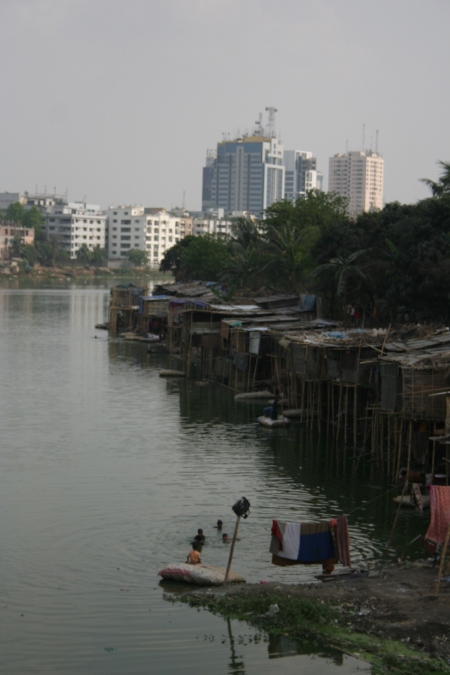
Banani
A Railroad Slum in Dhaka City

Many places in the third world millions of people have settled along railroad tracks on railroad or government property. In my guide's terminology, this qualified as a "temporary slum." Thousand of people crowded into shanties along the tracks.

Another view of the stifling hot packed shanties with the buildings of downtown Dhaka in the background. I have visited railroad slums very much like this one in Kolkata, Chittagong, and Mumbai.

Here we look from the railroad tracks off to one side. Slum dwellers had expanded the slum into the air by putting their homes on top of bamboo poles.

A close-up of the walkway to the bamboo houses on bamboo poles. Children and adults walk in or out twenty feet above the ground and water below. The corrugated metal boxlike structure in the center of the photo appears to be an outhouse. The excrement drops into the water below.

Meanwhile on the bank leading up from the water to the railroad, are the "hanging latrines" for the entire slum of thousands of people. Excrement drops onto the steep bank and makes its way to the waterway which leads to the river that runs through Dhaka.
Life is fearful for a slum-dweller. When will she face the next eviction?
A Semi-Permanent Slum in Dhaka City

My guide, a wonderful man who worked in many different slums of Dhaka, explained that there are three kinds of slums: permanent, semi-permanent, and temporary. Here we walk on one of the many narrow streets of a semi-permanent slum built on telephone company property. Tens of thousands of people live crowd into this relatively small area.

Most homes are one room. This young woman may live in the house on the left in front of her. Everywhere the dirt, mud, and trash create unsanitary conditions in addition to the shortage of clean water and proper sewage disposal. Note the paper thin bamboo walls of the house behind. These walls stop neither sounds nor smells.

This woman shows us the "front yard" shared by several families in the surrounding homes. Laundry, cooking, and washing are all done here.

Everywhere waste water runs through the streets since there are no proper sewers. Children play in these same narrow dirt and mud streets risking disease and early death.

One of the open sewers of the slum in which waste water and rain water are channeled into the nearest river. Trash and garbage fill this nearly dry sewer lined on both sides by dozens of homes.
Drugs fuelling AIDS crisis in Dhaka slums
Rafiqur Rahman
 "It is very alarming � a growing emergency. This could be very dangerous. The predictions for the future are that by 2030, Bangladesh will have an eight percent prevalence rate among all adults, which is enormous.
"It is very alarming � a growing emergency. This could be very dangerous. The predictions for the future are that by 2030, Bangladesh will have an eight percent prevalence rate among all adults, which is enormous.
 "There was a heroin spot around my house, with people taking drugs all the time," he said. "From my childhood, I saw them, and when I got older I started taking heroin too.
"There was a heroin spot around my house, with people taking drugs all the time," he said. "From my childhood, I saw them, and when I got older I started taking heroin too.
Location of the Slum’s.


Absence of Gender Discrimination.



Cooking Under the Open Sky

Slum’s made of Poly Bags

Sanitation System of Slum’s

Slum’s having a Polluted Environment

I find most Slum’s people are not aware and interested to know about the negative consequences of living in a Unhealthy environment. Because of unconsciousness and lack of awareness they do not pay any attention about making the the surrounding area of their Slum clean. Now-a-days many well known NGO’s are working for rising awareness in the rural areas of Bangladesh. but they are forgetting or ignoring about the Slum people who came here from the rural areas. So NGO’s and other Government Organization should pay an attention to make them aware of the situation before it gets worst.
Unhygienic Environment of Slum’s


Slum’s made of Poly Paper.

Cooking in the open Place

Slum’s situated near the Komlapur Railstation

Any age limite for being a Sales Girl.


Congested Slum’s

Riverside slum’s

Tea and Cigarettes Selling most common Sole Proprietorship Business

Tea Vendor and selling of cigarettes are the most common sole proprietorship business of Bangladeshi people. People of all age are engaged in this type of small business where there are no need of any registration, experience or any educational background. The main advantage of sole proprietorship is the limited capital and limited risk and these two advantages made sole proprietorship business more popular. Although it is a positive sign that people are trying hard to be employed and earn. But absence of proper policies and rules are turning these positive wheel into a negative force as open selling of CIGARATTES are encouraging more people especially the children to do smoking openly.
I have taken this photo while I was taking a Video Interview of this person in the month of April, 2009 where he talked about his life, income level, family background and problems and difficulties he is having while maintaining a large family with a limited income.
Environment Pollution think about it.
Global Health
Global health is greatly affected by factors such as pollution, changes in global and regional climate, water resource quality, food growing capacity, and ecosystem health. Poor human health in turn affects the capacity of the global population to deal with environmental changes and adapt to them. Therefore, global health plays a central role in the central role in the Earth Institute’s work to understand the adverse effects of development and to find a path that leads to a sustainable future.
Everyday we encounter chemicals, physical agents, and other substances in the air, water and soil around us, as well as in the flood we eat. Research shows a connection between our environment and our health, but we still have a long way to go in understanding what links the two. We need better information and more sophisticated tools to understand the causes of these diseases if we are to prevent.
The origin of the plastic most likely came from the ocean surface abundant with plastic pollution. This plastic pollution has grown steadily over the years. The plastic back in 1980 was mostly of polyethylene which primarily comes from plastic bags and plastic bottles. The plastic is carried around the ocean via wind and ocean currents. If these picture speak anything of meaning to you, i hope the message is clear. Do your part and pick up a piece of liter if you see some. Also a great way to help out is by participating in local stream and river cleanups in your area.
This message is also being made to say that seabirds are not the only species affected here. Numerous species are affected, and something needs to done to clean up the plastic vortex. Atleast 267 species including whales, fish, turtles, seals, sea lions and seabirds have ingested or become entangled in the debris. The sad truth is that unless something is done t clean up the mess, many more marine life species will continue to die or face unnecessary trauma. The human way of life has taken a roll on the earth. The carelessness that humans have lived by for thousands of years can no longer sustain on this planet without serious consequenses.
Water polluiton comes from a number of unique sources. Combining these points of pollution with the increase in global population in a continuously decreasing amount of clean water for plant and animal lifeon earth and increasing amount of polluted water. It is widely known that water covers almost three-quarters of the earth surface. However the large amount of pollutants than fill our water ways each year are largely unknown, such as industrial waste, urban stormwater, agricaultural runoff, various household chemicals and even nuclear waste.Industry has been responsible for chemical pollution by dumping toxic wste into river. The many sources of pollutions , along with the overpuming rivers and groundwater have caused water quality to decline nationwide. Agricultural run off has caused chemical pollution that damages the delicates aquatic ecosystems.
Air pollution
Air poluiton may be defined as the introduction into the atmosphere of any material that brings about a negative effect on plants,animals, or people. The effect can vary from lowered visibility at the grand canyon to serve pollution outbreaks which may force city residents to stay indoors.Air pollution is a very big problem in our country. A large part of air pollution comes from cars. The Environmental protection agency says, ” The most polluting activity an average person does everyday is drive their car”. Most people probably aren’t aware that they are polluting the environment. May be if everyone knew how serious this polluting problem is, then they would find ways to reduce the pollution.
This picture was taken from my apartment.On the road the dustbin is took place.Government even do not care about all this ridiculous matter.People throwing garbage here and there.Its such a threat to our environment.because its polluting the air in several ways and making our environment unhealthy. Even though sometimes government provide specipic place to put garbage but what happen-people ignore it.we should not throw all this staffs here and there to protect our environment from air pollution.
Garbage disposal
Soil pollution comprises the pollution of soils with materials, mousty chemicals, that are out of place or are present at concentrations higher than normal which may have adverse effect on humans or other organisms. It is difficult to define soil pollution exactly because different opinions exists on how to characterize a pollutant, while some consider the use of pesticides acceptable if their effect does not exceed the result, others do not consider any use of pesticides or even chemical fertilizers acceptable. however soil pollution is also caused by means other than the direct addiction of xenobiotic( man made ) chemicals such as agricultural runoff waters, industrial waste materials, acidic precipitates and radioactive fallout.soil pollution can lead to water pollution if toxic chemicals leach into groundwater, or if contaminated runoff reaches strems, lakes or oceans. Soil also naturally acontributes to air pollution by releasing voltile compounds into the atmosphere.
Vehicle pollution
Of course air pollution is mothing new and from earliest times various pollutants have posed such a threat to public health that policy makers have been forced to intervence. It consider the scientific evidence that is available on the health effects of vehicle pollution. The large majority of today’s cars and trucks travel bu using internal combustion engines that burn gasoline or other fossil fuels. The process of burning gasoline to power cars and trucks contributes to air pollution by releasing a variety of emissions into the atmosphere. Emissions that are released directly into the atmosphere from the tailpipes of cars and trucks are are the primary source of vehicularl pollution. but motor vehicles also pollute air during the processes of manufacturing, refueling, and from the emissions associated with oil refining and disturbtion of the fuel they burn.
Burning garbage
Did you know? when you burb garbage in a stove,in a barrel or in a camp fire,you r creating poisions the form of large variety of toxic chemicals that are released into the air.These fall back to the earth as particals or in rain drops and contaminate the water,plants and soil and accumulate in fat of animals and fish.These toxics effectively find their way up to the food chain,into the food we eat and poisoin our bodies causing serious health concern for our children and ourselves.
Global Roundtable On Climate Change
The path to climate sustainability, a joint statement made by the Global Roundtable on climate change in 2007 describes a pathway for climate change policy. The joint statement highlights the urgency for global action to reduce emissions of carbon dioxide. This statement was released on february 20, 2007 and has been endorsed by 108 companies from around the world and by 138 individual leaders from business, civil society, government and research institutions. While highlighting the importance of increased efficiency they also note the need to use non fossil- fuel energy sources and to deploy technologies to capture and store carbon dioxide. The statement highlights why success is possible and how success may be reached. The signatories call for concerted action of governments, the private sector, trade unions, and other sectors of civil society. There is a strong emphasis on the global scope of the problem, such that all countries must be party to the accord, with commitments to actions reflecting the levels of economic development.
Traffic jam in Dhaka City
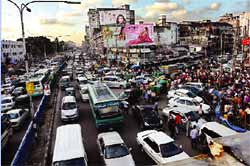
Traffic jam in Dhaka is vary common problem. Every day we are facing jam. Government take some positive step .Otherwise we are going big problem in our daily life.
Farmgate Bus Stand
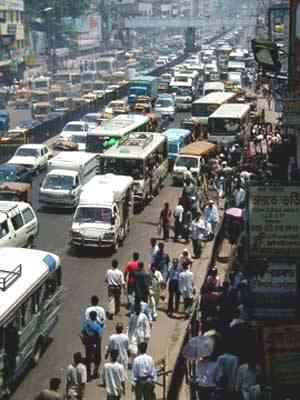
Pick time in Farmgate area and people are faceing lots of problem walking in the VIP road.It is bus stand whole inter Dhaka city.Most of the time bus driver can not follow the rule.Awareness is a big problem in our city life.
Most common and popular ride
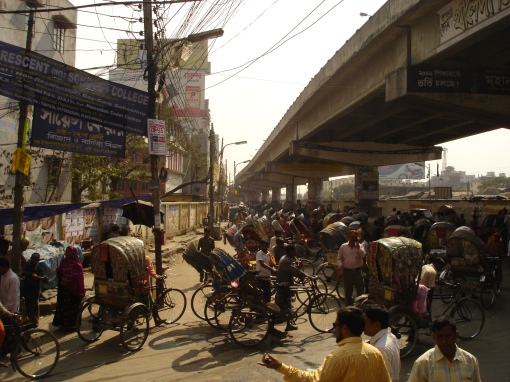
Illegal parking
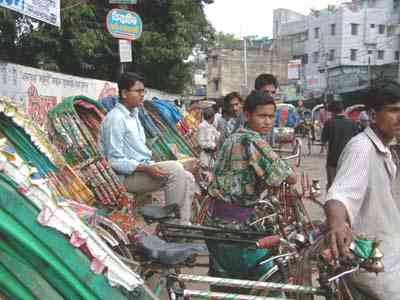
Another reason of traffic jam illegal parking. Most of the rickshaw puller are do not knowledge how to park rickshaw in the narrow road. They do not have any legal license .
Rickshaw Causing Trafic Jam
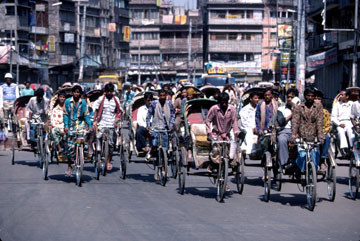
The whole road is blocked by rickshaw . Other vehicles have hardly any chance to get a side from the rickshaws . Government should take some possitive step to controlled this traffic jam.
Rickshaw ride the wrong road
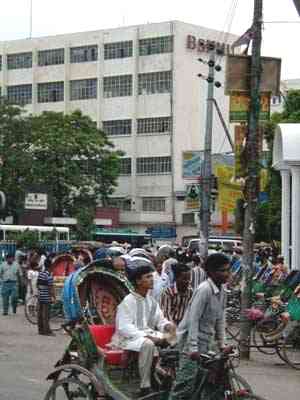
Rickshaw puller ride the rickshaw wrong side in the main road. Because he do not know what is right or wrong. They know just ride .Another reason of traffic jam wrong side ride.
Wating for the signal
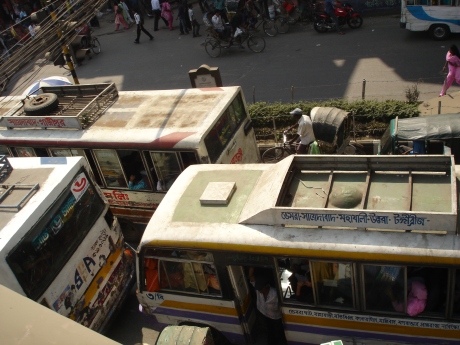
Malibagh bus stand most of the bus driver illegal parking in the road. They can not follow the traffic rule.Bus driver do not have driving license and vehicle paper.
Pick our in farmgate area
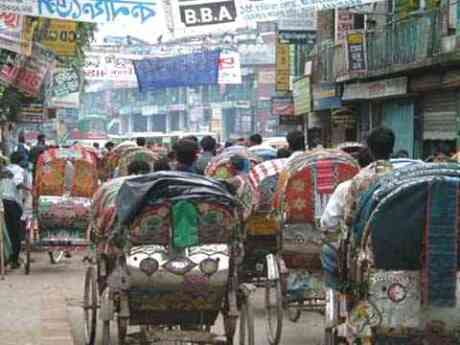
Dhaka is metropolitan city.Most of the outside people come Dhaka to his work. They are day labor like rickshaw puller. Farmgate area most of the road is narrow. So it gather traffic jam every moment in our daily life.
VIP Road senario not acceptable
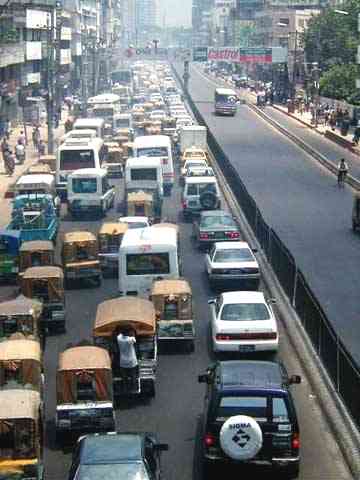
Unplanned traffic system is big problem in our country.when VIP person go to his /her office traffic police stopped the signal at least 20 minutes ago.so every signal point has too rush in our city. Awareness is a main factor .
Trapped in tailback
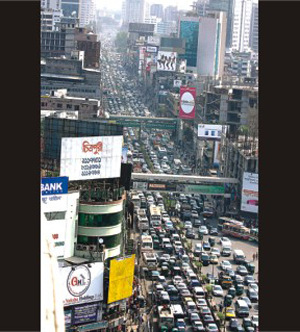
Return of a huge number of unfit buses and illegal rickshaws on the streets is the main reason for worsening traffic congestion in the city, say traffic cops and public transport employees.They also blame the tailbacks on a rapid rise in the number of new cars with little expansion of the road network.Special measures to ensure smooth movement of the VVIPs’ vehicles only add to the sufferings of commuters. And to make matters still worse, protest rallies blocking roads have intensified in the last three days.Speaking in return for anonymity, a traffic sergeant said the out-of-condition buses that were banned from the city streets have got back to business with changes on the exterior to look new .
Many factors work behind traffic jams
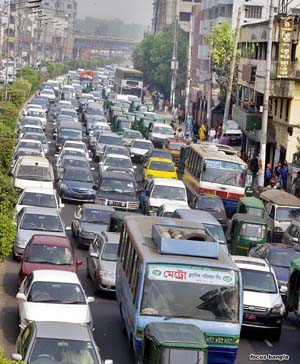
Faulty traffic signaling systems, inadequate manpower and narrow road spaces and overtaking tendency of drivers create pro-longed traffic congestions and intensify sufferings of commuters keeping people motionless as well as creating suffocating condition in the streets.VIP protocol maintaining is another reason for frequent traffic jams in the streets and divider problem in the city’s different important roads also causes congestion. Besides, illegal car parking, and unplanned road excavating on the same road by WASA, DESA, and telephone and telegraph agencies without any integration among them, are responsible for intolerable traffic jams.
Suitable time for washing glasses
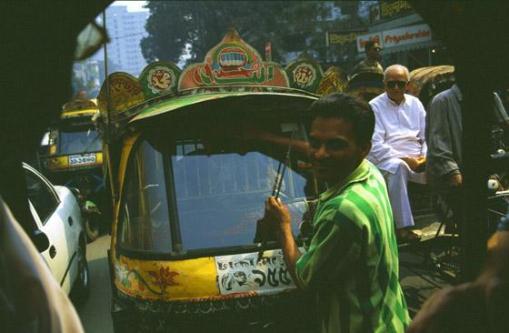
Traffic Jam kills time. So often drivers of the tempo’s and four stock three wheeler vehicles are seen washing their glasses while waiting for a release from the suffocating boring and time killing traffic jam.
Common scenario of Dhaka City
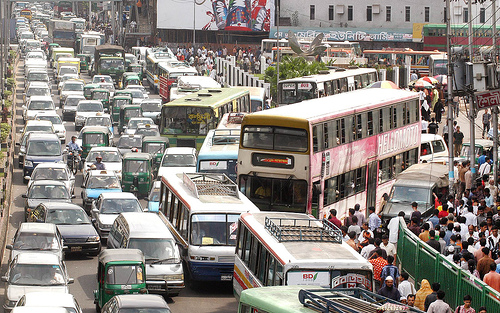
Driver do not go by traffic rules. And there are bus terminals not authorized by the traffic department. The traffic police have failed to do anything about this problem and the situation is going from bad to worse day by day.
Fulbaria
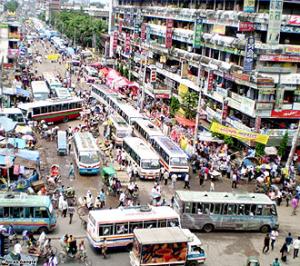
Buses and trucks NOT allowed on the flyover
When the Mohakhali Flyover was inaugurated, the civilians of Dhaka city assumed that this would prove to be a drastic convinience as far as reducing traffic is concerned. Once again, we were proved wrong. It was CLEARLY mentioned on the signboard when going into the flyover that buses and trucks were NOT allowed on the flyover. At the begining, this rule was followed quite efficiently. But nowadays, similar to all the traffic rules in Dhaka, it is not being followed as much. We frequently see buses or trucks on the flyover, instead of being under it, where , according to the system, they are actually supposed to be.The road under the flyover is where all the bus stands are, and 95% of the time there is heavy traffic due to the congestion of all these buses. But does that imply that the rules are clearly meant to be broken? Buses and trucks, especially here in Dhaka, have the perenial tendancy to travel at menacing speed, completely oblivious of its passenger s safety and also of the other vehicles and civilians on the street. Now the flyover is where a lot of speeding take place, and on top of that, when these mammoth vehicles travel on that road with dangerous speed, it increases the risk of accidents. They often stop when they are not supposed to on the slope going down the flyover to pick up passengers, which, of course, yours truly has mentioned in one of his other posts. Once again, the lack of authoritarian evaluation and the sheer lack of traffic authorities open the door to break the rules so easily.
As if the traffic situation on the roads of Dhaka were not bad enough, road construction on a busy road at a busy time makes situations inequivocally a lot worse. I am quite positive that this is a sight that many have witnessed while travelling on the road. All of a sudden the traffic increases, there is bumper to bumper traffic or hardly any movement at all. The reason? Construcion is being undertaken on a side of the road which usually provides the space for vehicles to move about. The roads or the side of the road that is being constructed takes up a large segment of space, which would be used for the cars and other vehicles. Completely blocking or eliminating that road, that too at a busy time, makes the already volatile traffic situation a lot worse. Let us also not forget the ever so patient attitude of our drivers and rikshawpullers. The picture shows a sign which clearly states “Probesh Nished” (No Entry), yet rickshaws and cars will somehow try and find a magical space through which they can pass through, despite witnessing quite clearly that the construction is being made. Yes, Dhaka needs improvements in the quality of their roads and of course, without a doubt, road construction should be undertaken to improvise the situation. But why at a regular traffic hour? The authorities who regulate such activities can just make sure all this can be done quite late at night, at the late hours when there are hardly any vehicles on the roads. Not only can the workers work to their optimum abilities without being hassled by the drivers and commuters, mind numbing traffic situations will not arise.
 Ask any driver or a commuter here in Dhaka city,the main catalyst for traffic congestion and traffic hazards are rickshaws. There are innumerable rickshaws that can be seen on almost all the roads in Dhaka. Small roads, narrow streets, busy lanes and main roads, you mention it, and the sight of rickshaws will always be present. My main concern is not to make suggestions to completely ban rickshaws, as all of them undertook this tedious profession just to feed their families and live on a daily basis. Rather my suggestion would prove to make life easier for both th rickshawpullers, the vehicle drivers and of course the commuters. Seperate lanes would be the answer. In most busy roads, why not make seperate lanes , one for cars and auto run vehicles, and another, for rickshaws and cycles. With seperate lanes , rickshaws can move about at their own pace, and not be worried about being smashed over by a speeding vehicle, and vice versa, the cars can also benefit from not breaking constantly to avoid hitting rickshaws and can move about with some decent speed. Chances of accidents, although, can happen anytime anywhere, are reduced by a considerable margin, and the commuters on cars and also on rickshaws can have a peace of mind. Managing and controlling traffic will also prove to be much easier for the traffic authorities.
Ask any driver or a commuter here in Dhaka city,the main catalyst for traffic congestion and traffic hazards are rickshaws. There are innumerable rickshaws that can be seen on almost all the roads in Dhaka. Small roads, narrow streets, busy lanes and main roads, you mention it, and the sight of rickshaws will always be present. My main concern is not to make suggestions to completely ban rickshaws, as all of them undertook this tedious profession just to feed their families and live on a daily basis. Rather my suggestion would prove to make life easier for both th rickshawpullers, the vehicle drivers and of course the commuters. Seperate lanes would be the answer. In most busy roads, why not make seperate lanes , one for cars and auto run vehicles, and another, for rickshaws and cycles. With seperate lanes , rickshaws can move about at their own pace, and not be worried about being smashed over by a speeding vehicle, and vice versa, the cars can also benefit from not breaking constantly to avoid hitting rickshaws and can move about with some decent speed. Chances of accidents, although, can happen anytime anywhere, are reduced by a considerable margin, and the commuters on cars and also on rickshaws can have a peace of mind. Managing and controlling traffic will also prove to be much easier for the traffic authorities.
